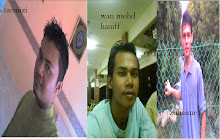
The Satellite Dish
-When the signal reach to the viewer house, the satellite dish captured the signal. A satellite dish is just a special kind of antenna designed to focus on a specific broadcast source. The standard dish consists of a parabolic (bowl-shaped) surface and a central feed horn. To transmit a signal, a controller sends it through the horn, and the dish focuses the signal into a relatively narrow beam.
-In some systems, the dish needs to pick up signals from two or more satellites at the same time. The satellites may be close enough together that a regular dish with a single horn can pick up signals from both.
-A new dish design uses two or more horns to pick up different satellite signals

The Receiver/Decoder
The receiver has four essential jobs :
-It scrambles the encrypted signal
-It takes the digital MPEG-2 or MPEG-4 signal and converts it into an analog format that a standard television can recognize.
-It extracts the individual channels from the larger satellite signal
-It keeps track of pay-per-view programs and periodically phones a computer at the provider's headquarters to communicate billing information
Receivers have a number of other features as well. They pick up a programming schedule signal from the provider and present this information in an onscreen programming guide.
- It used expensive dishes to discover unique programming that wasn't necessarily intended for mass audiences.
-The dish and receiving equipment gave viewers the tools to pick up foreign stations, live feeds between different broadcast stations.
-The satellite was broadcast in C-band radio in the 3.7-gigahertz (GHz) to 6.4-GHz frequency range.
-Digital broadcast satellite transmits programming in the Ku frequency range (11.7 GHz to 14.5 GHz )
-The component is programming sources, broadcast center, satellites, dish and receiver.

